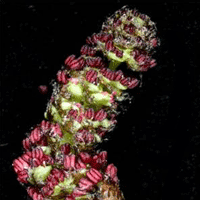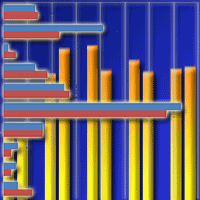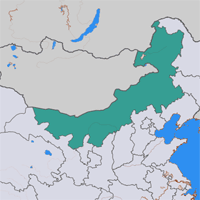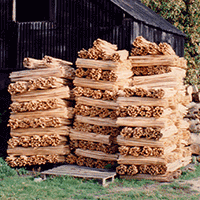
Exploring the potential behavior of consumers towards transgenic forest products: the Greek experience
Lambros Tsourgiannis (1) , Vassiliki Kazana (2), Valasia Iakovoglou (2)
iForest - Biogeosciences and Forestry, Volume 8, Issue 5, Pages 707-713 (2015)
doi: https://doi.org/10.3832/ifor1339-007
Published: Jan 13, 2015 - Copyright © 2015 SISEF
Research Articles
Collection/Special Issue: COST Action FP0905
Biosafety of forest transgenic trees and EU policy directives
Guest Editors: Cristina Vettori, Matthias Fladung
Abstract
Recently, the interest in wood products and bioenergy applications of transgenic forest trees is increasing worldwide, though plantations have been established to this purposes only in China. Information on the anticipated attitudes of consumers towards products from genetically-modified forest trees would therefore be of a particular interest both for developers and policy makers. This study investigated the purchasing behavior of potential Greek consumers towards the products from transgenic forest trees. In 2011, a survey was conducted based on randomly selected interviews of 418 potential consumers from all over Greece. Principal Components Analysis (PCA) was performed to identify the main factors affecting the potential purchasing behavior of consumers towards products from transgenic forest trees. Hierarchical and non- hierarchical cluster analysis was applied to PCA scores to identify homogeneous groups of consumers sharing a similar purchasing behavior. Discriminant analysis was used to cross-validate cluster membership of consumers based on PCA factors. Four groups of consumers showing similar potential purchasing behavior towards the products of transgenic forest trees were identified: (a) those interested in the quality of products; (b) those oriented towards lower prices; (c) those influenced by curiosity and labeling issues; and (d) consumers mainly interested in health safety issues and environmental impacts. Finally, a most frequent profile for each group of consumers was outlined according to their demographic characteristics and their opinions on the use of transgenic-tree derived products. Although it is unlikely that products from GM forest trees will be marketed in the next 10 to 15 years, information on the anticipated attitudes of consumers has to be taken into consideration by the developers and policy makers.
Keywords
Consumer Purchasing Behavior, Transgenic Forest Products, Transgenic Forest Trees
Authors’ Info
Authors’ address
Region of Eastern Macedonia & Thrace, 67100 Xanthi (Greece)
Valasia Iakovoglou
Department of Forestry & Natural Environment Management, Eastern Macedonia & Thrace Institute of Technology, 66100 Drama (Greece)
Corresponding author
Paper Info
Citation
Tsourgiannis L, Kazana V, Iakovoglou V (2015). Exploring the potential behavior of consumers towards transgenic forest products: the Greek experience. iForest 8: 707-713. - doi: 10.3832/ifor1339-007
Academic Editor
Cristina Vettori
Paper history
Received: May 05, 2014
Accepted: Sep 08, 2014
First online: Jan 13, 2015
Publication Date: Oct 01, 2015
Publication Time: 4.23 months
Copyright Information
© SISEF - The Italian Society of Silviculture and Forest Ecology 2015
Open Access
This article is distributed under the terms of the Creative Commons Attribution-Non Commercial 4.0 International (https://creativecommons.org/licenses/by-nc/4.0/), which permits unrestricted use, distribution, and reproduction in any medium, provided you give appropriate credit to the original author(s) and the source, provide a link to the Creative Commons license, and indicate if changes were made.
Web Metrics
Breakdown by View Type
Article Usage
Total Article Views: 51030
(from publication date up to now)
Breakdown by View Type
HTML Page Views: 43418
Abstract Page Views: 2721
PDF Downloads: 3512
Citation/Reference Downloads: 12
XML Downloads: 1367
Web Metrics
Days since publication: 4010
Overall contacts: 51030
Avg. contacts per week: 89.08
Citation Metrics
Article Citations
Article citations are based on data periodically collected from the Clarivate Web of Science web site
(last update: Mar 2025)
Total number of cites (since 2015): 7
Average cites per year: 0.64
Publication Metrics
by Dimensions ©
Articles citing this article
List of the papers citing this article based on CrossRef Cited-by.
References
Understanding attitudes and predicting social behaviour. Prentice-Hall, Englewood Cliffs, NJ, USA. pp. 278.
Gscholar
Statistical power analysis for the behavioral sciences (2nd edn). Erlbaum, Hillsdale, NJ, USA, pp. 273-406.
Gscholar
The potential environmental, cultural and socio-economic impacts of genetically modified trees. UNEP/CBD/SBSTTA/13/INF/6, Food and Agriculture Organization of the United Nations, Rome, Italy, pp. 17.
Gscholar
Forests and genetically modified trees. Food and Agriculture Organization of the United Nations, Rome, Italy, pp. 235.
Gscholar
Biosafety of genetically modified forest trees (GMTs). COST Action FP0905 - a common action of European scientists. In: Proceedings of the “2nd International Conference of the IUFRO Working Party 2.09.02”. Mendel lectures and Plenary MLP-3, IUFRO, Brno, Czech Republic, pp. 13.
Gscholar
Multivariate data analysis. Prentice Hall Inc, New Jersey, USA, pp. 730.
Gscholar
Econometric modelling and projections of wood products demand, supply and trade in Europe. Geneva Timber and Forest Discussion Paper 59, EE/TIM/DP/59, UNECE/ FAO, Geneva, Switzerland, pp. 196.
Gscholar
Questionnaire design, interviewing and attitude measurement. Continuum, New York, USA, pp. 303.
Gscholar
Potential markets for certified forest products in Europe. EFI Proceedings No. 25, European Forest Institute, Joensuu, Finland, pp. 352.
Gscholar
Methodology of agricultural sociological research. Ziti Publications, Thessaloniki, Greece, pp 367.
Gscholar
Transgenic trees for biomass. The effects of regulatory restrictions and court decisions on the pace off commercialization. AgBioForum 13 (4): 391-397.
Gscholar
Ethical and social considerations in commercial uses of food and fiber crops. In: Proceedings of the “First International Symposium on Ecological and Societal Aspects of Transgenic Plantations: Tree Biotechnology in the New Millenium” (Strauss SH, Bradshaw HD eds). Columbia River George (OR, USA) 22-24 July 2001. College of Forestry, Oregon State University, Corvallis, OR, USA pp. 92-98.
Online | Gscholar
Creating intangible competitive advantage in the forest products industry. Forest Products Journal 56 (7/8): 4-13.
Gscholar

















